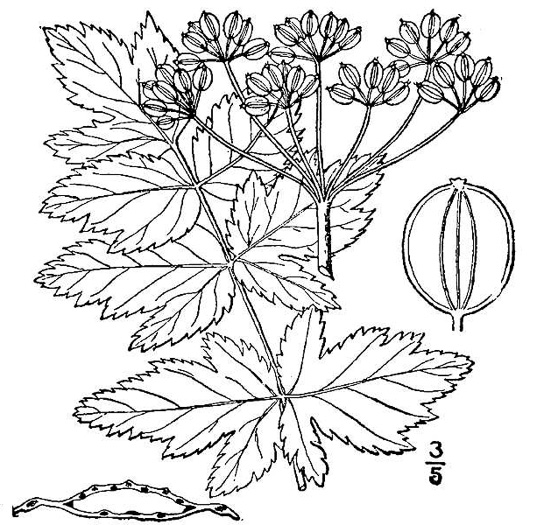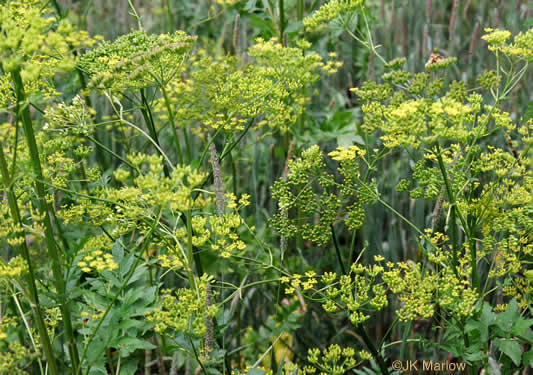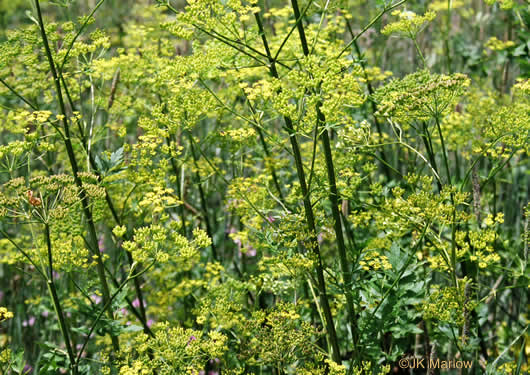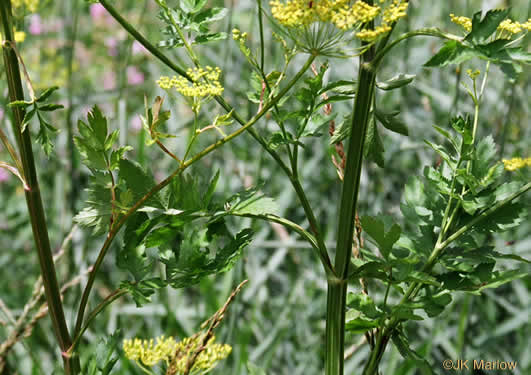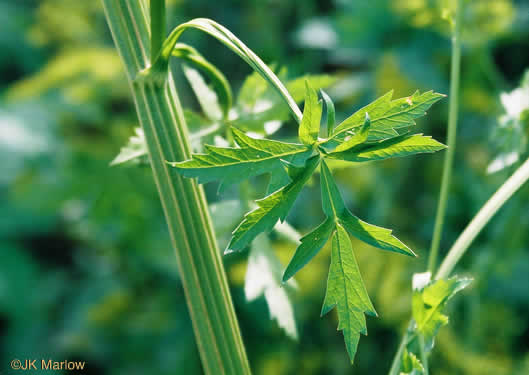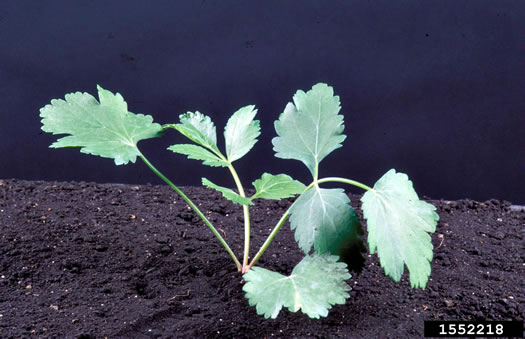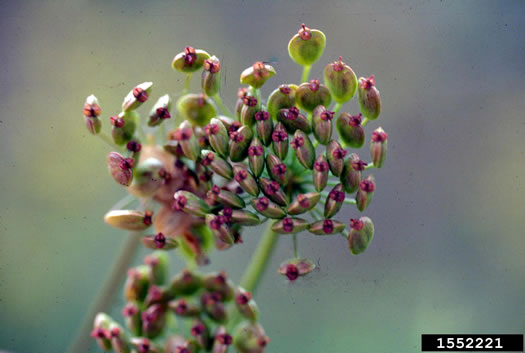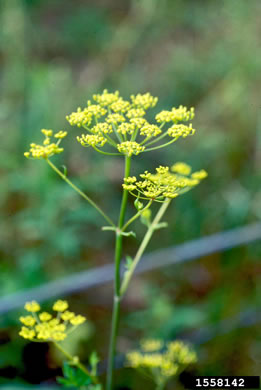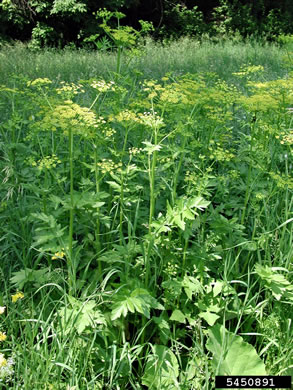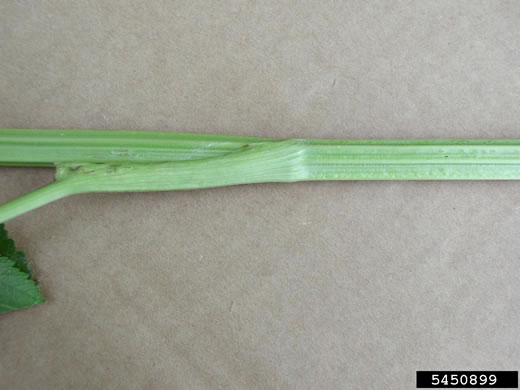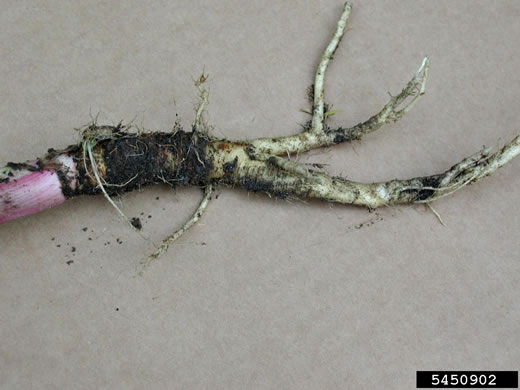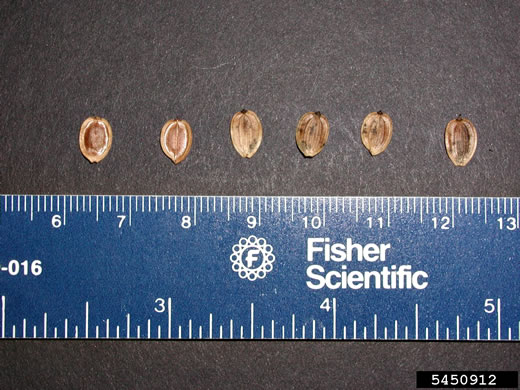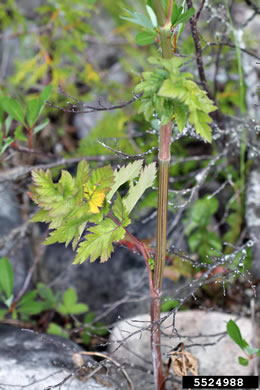Spermatophytes (seed plants): Angiosperms (flowering plants): Eudicots: Core Eudicots: Asterids: Campanulids: Apiales
WEAKLEY'S FLORA OF THE SOUTHEASTERN US (4/14/23):
Pastinaca sativa
FAMILY
Apiaceae
Go to FSUS key
Dig deeper at SERNEC, a consortium of southeastern herbaria.
Check out EDDMapS.org to see where this has been reported.
Read more about Wild Parsnip at Vascular Plants of North Carolina.
SYNONYMOUS WITH
PLANTS NATIONAL DATABASE:
Pastinaca sativa
FAMILY
Apiaceae
SYNONYMOUS WITH Floristic Synthesis of North America. BONAP (Kartesz, 2021)
Pastinaca sativa
SYNONYMOUS WITH Floristic Synthesis of North America (Kartesz, 1999)
Pastinaca sativa
SYNONYMOUS WITH VASCULAR FLORA OF THE CAROLINAS (Radford, Ahles, & Bell, 1968) 140-35-001:
Pastinaca sativa FAMILY Apiaceae
SYNONYMOUS WITH Manual of the Southeastern Flora (Small, 1933, 1938)
Pastinaca sativa
COMMON NAME:
Parsnip
To see larger pictures, click or hover over the thumbnails.
JK Marlow jkm0507i_06
July Pocahontas County WV
Tea Creek Recreation Area
Stem hollow or solid, ribbed, per Flora of China.
John Cardina, The Ohio State University, Bugwood.org bug_1552221
Month Unknown
Fruit broadly ellipsoid, glabrous, strongly flattened dorsally, per Vascular Flora of the Carolinas (Radford, Ahles, & Bell, 1968).
John Cardina, The Ohio State University, Bugwood.org bug_1558142
Month Unknown
Umbels compound, terminal and lateral, rays 12-25, spreading-ascending, per Vascular Flora of the Carolinas (Radford, Ahles, & Bell, 1968).
Leslie J. Mehrhoff, University of Connecticut, Bugwood.org bug_5450891
Month Unknown
A tall plant, up to 6', per Wildflowers of the Southern Mountains (Smith, 1998).
Leslie J. Mehrhoff, University of Connecticut, Bugwood.org bug_5450899
Month Unknown
In the family Apiaceae, petioles are usually sheathing at their base, per Flora of China.
Leslie J. Mehrhoff, University of Connecticut, Bugwood.org bug_5450902
Month Unknown
Root rich in starch & sugar, used as food, animal fodder, and in wine making, per Flora of China.
Rob Routledge, Sault College, Bugwood.org bug_5524988
Month Unknown
Leaves long-stalked and pinnately divided, the segments toothed thoughout, per Wildflowers of the Southern Mountains (Smith, 1998).
WEAKLEY'S FLORA OF THE SOUTHEASTERN US (4/14/23):
Pastinaca sativa
FAMILY
Apiaceae
SYNONYMOUS WITH
PLANTS NATIONAL DATABASE:
Pastinaca sativa
FAMILY
Apiaceae
SYNONYMOUS WITH
Floristic Synthesis of North America. BONAP (Kartesz, 2021)
Pastinaca sativa
SYNONYMOUS WITH
Floristic Synthesis of North America (Kartesz, 1999)
Pastinaca sativa
SYNONYMOUS WITH
VASCULAR FLORA OF THE CAROLINAS (Radford, Ahles, & Bell, 1968) 140-35-001:
Pastinaca sativa
FAMILY
Apiaceae
SYNONYMOUS WITH
Manual of the Southeastern Flora (Small, 1933, 1938)
Pastinaca sativa
If a search such as "Carex leptalea var. leptalea" doesn't deliver the results you want, try "Carex leptalea".
Or, to minimize chances of a misspelling, try just "Carex le".
Less is more: If "pencil flower" doesn't deliver the results you want, try "pencil".

